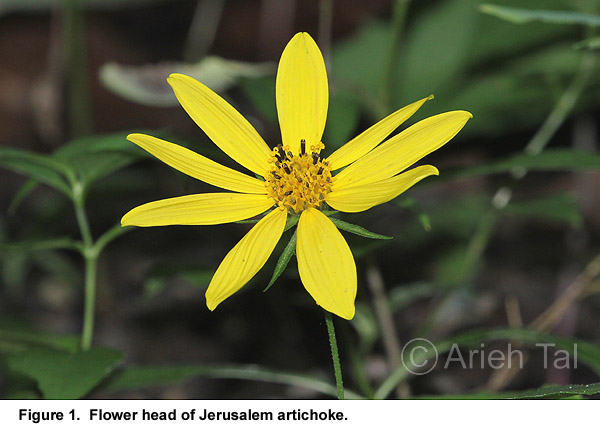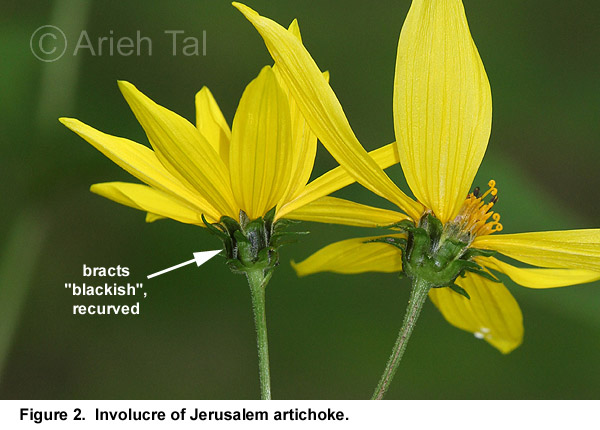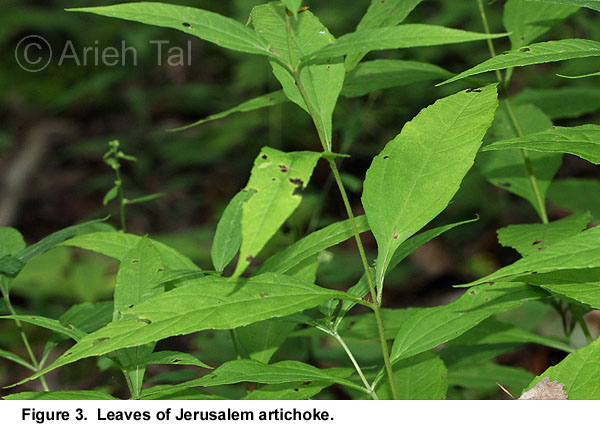|
.
Comments:
The
sunflower
(Helianthus)
plants
found
during
the
survey
of
the
gorge
and
rim
trails
at
Buttermilk
Falls
State
Park
(BFSP)
are
most
similar
to
Helianthus
tuberosus
and
H.
decapetalus.
However,
they
don't
strictly
conform
to
the
scientific
guidance*
for
either
of
these
two
species.
Most
treatments
of
this
group
of
species
differentiate
between
these
two,
very
similar
species
based
on
stem
characteristics.
Helianthus
tuberosus
has
stems
that
are
evidently
hairy
throughout,
with
rough,
stiff
hairs.
Helianthus
decapetalus
has
stems
that
are
more
or
less
hairless,
except
within
the
area
of
the
inflorescence.
Moreover,
stems
of
H.
decapetalus
are
typically
glaucous,
compared
with
stems
of
H.
tuberosus,
which
are
not
glaucous.
Regarding
other
characteristics,
the
involucral
bracts
of
both
species
tend
to
be
long
and
thin,
with
ciliate
margins
and
tend
to
lean
outwards
(loose,
not
appressed),
but
the
bracts
of
H.
tuberosus
are
often
dark-tinged
(blackish),
compared
with
those
of
H.
decapetalus,
which
are
completely
green.
The
bracts
of
H.
tuberosus
usually
spread
outwards
from
the
middle,
while
those
of
H.
decapetalus
tend
to
lean
outwards
from
the
base.
There
are
no
other
Helianthus
species
which
closely
match
the
characteristics
of
the
plants
found
at
BFSP.
Coincidently,
there
is
a
large,
robust
population
of
H.
tuberosus
found
upstream
from
the
gorge
area
(within
the
"upper
park"
section
of
BFSP).
Those
plants
more
readily
conform
to
the
scientific
guidance
for
that
species,
and
significantly
differ
in
morphology
from
the
plants
found
within
the
surveyed
area.
In
sum,
we
cannot
be
confident
of
our
identification
of
the
Helianthus
plants
found
within
the
survey
area
(gorge
and
rim
trails),
though
our
plants
more
closely
conform
to
the
guidance
for
H.
tuberosus.
. |





